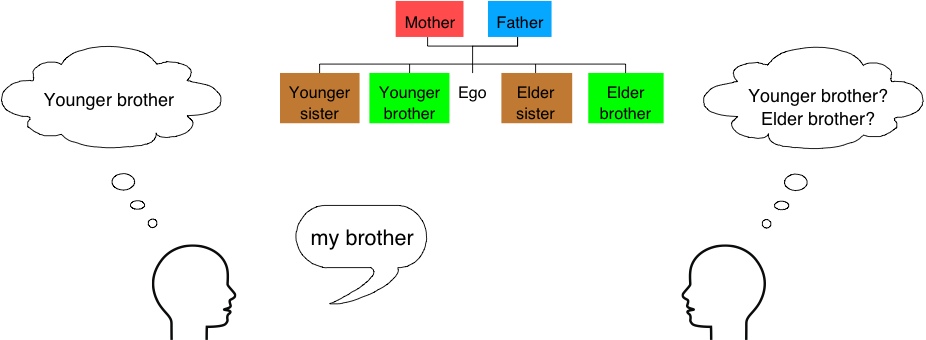| Summary:
|
Every language includes a system of kin terms but different languages carve up
the family tree in different ways. Our paper proposes a theory that helps to
explain which kin classification systems are found in the languages of the
world. We argue that kin classification systems are shaped by a tradeoff
between two competing principles: good systems are simple, and they enable
informative communication. The principles of simplicity and informativeness are relevant to other semantic domains such as color, and the tradeoff between them may provide a domain-general foundation for variation in category systems across languages.
|
|
|
| Paper: |
Download the paper and supplementary material.
|
|
|
| FAQ: |
Responses
to some questions about the paper.
|
|
|
| Data: |
The Murdock data
were originally published in Murdock (1970),
Kin term patterns and their distribution,
Ethnology, 9(2).
This paper was reprinted in
World Cultures, 11(1) in 2000 and we used the electronic data file that accompanied this reprint.
Corpus statistics
were collected from the
Corpus of Contemporary American English
and the
German Reference Corpus.
|
|
|
| Code: |
Download the code.
|
|
|
| References: |
The following are especially relevant to our work.
J. Greenberg,
Universals of kinship terminology: their nature and the problem of their explanation.
D. Jones, The
universal psychology of kinship: evidence from language.
S. B. Nerlove, A. K. Romney,
Sibling terminology and cross-sex behavior.
T. Regier, P. Kay, N. Khetarpal, Color naming reflects
optimal partitions of color space.
|
|
| Funding: |
Our work was supported by the National Science Foundation under awards CDI-0835797 and
SBE-0541957 and by the Pittsburgh Life Sciences Greenhouse Opportunity Fund.
|

